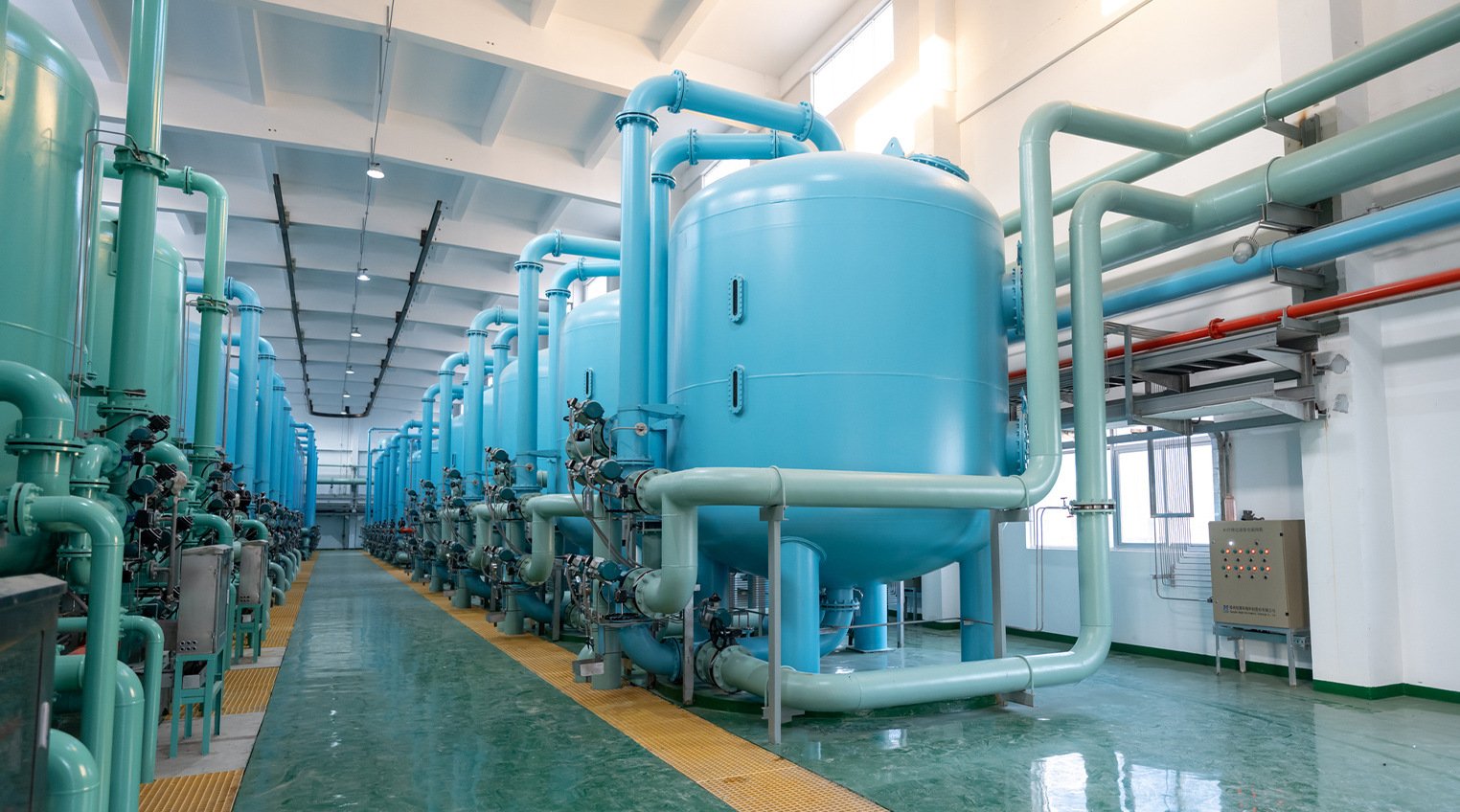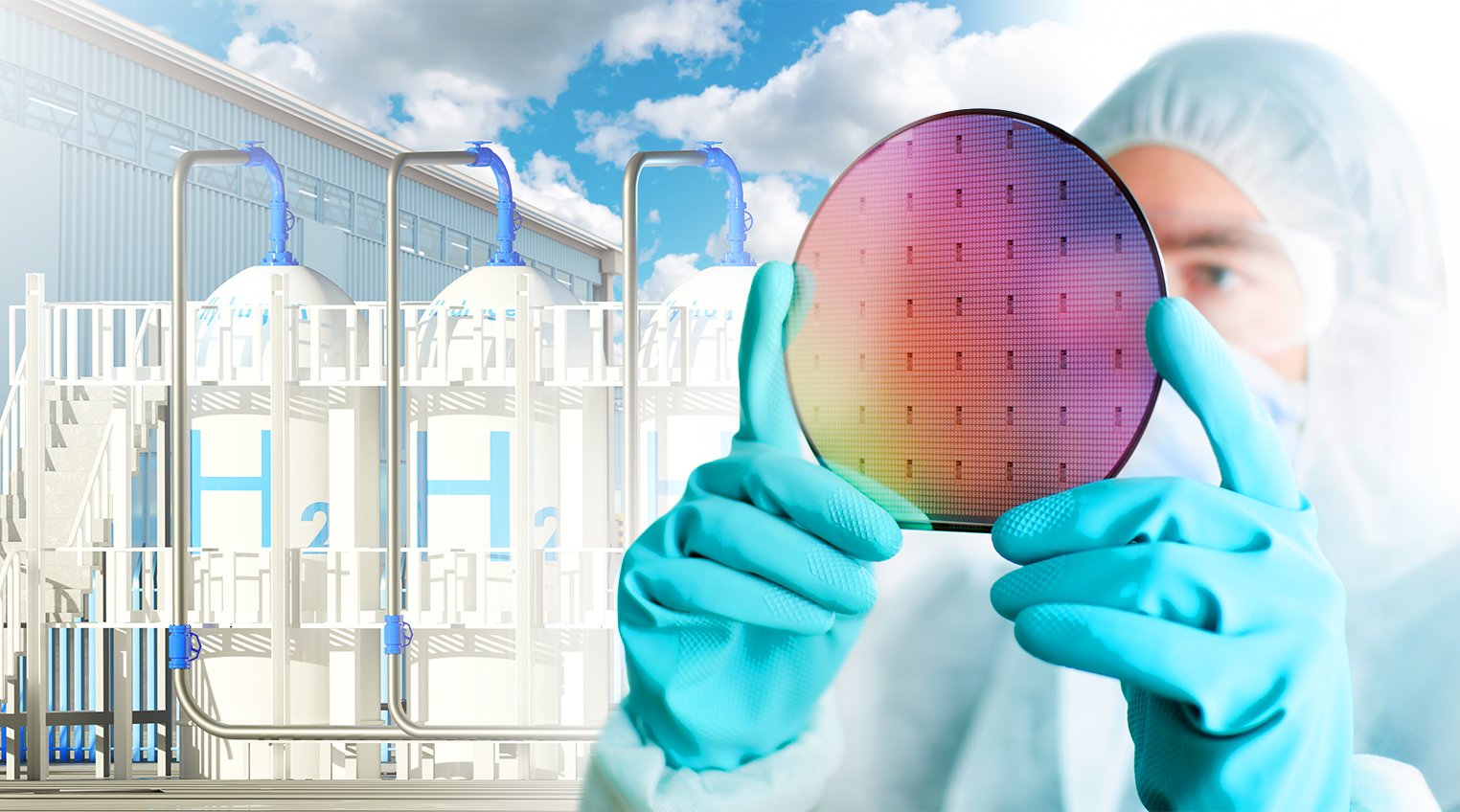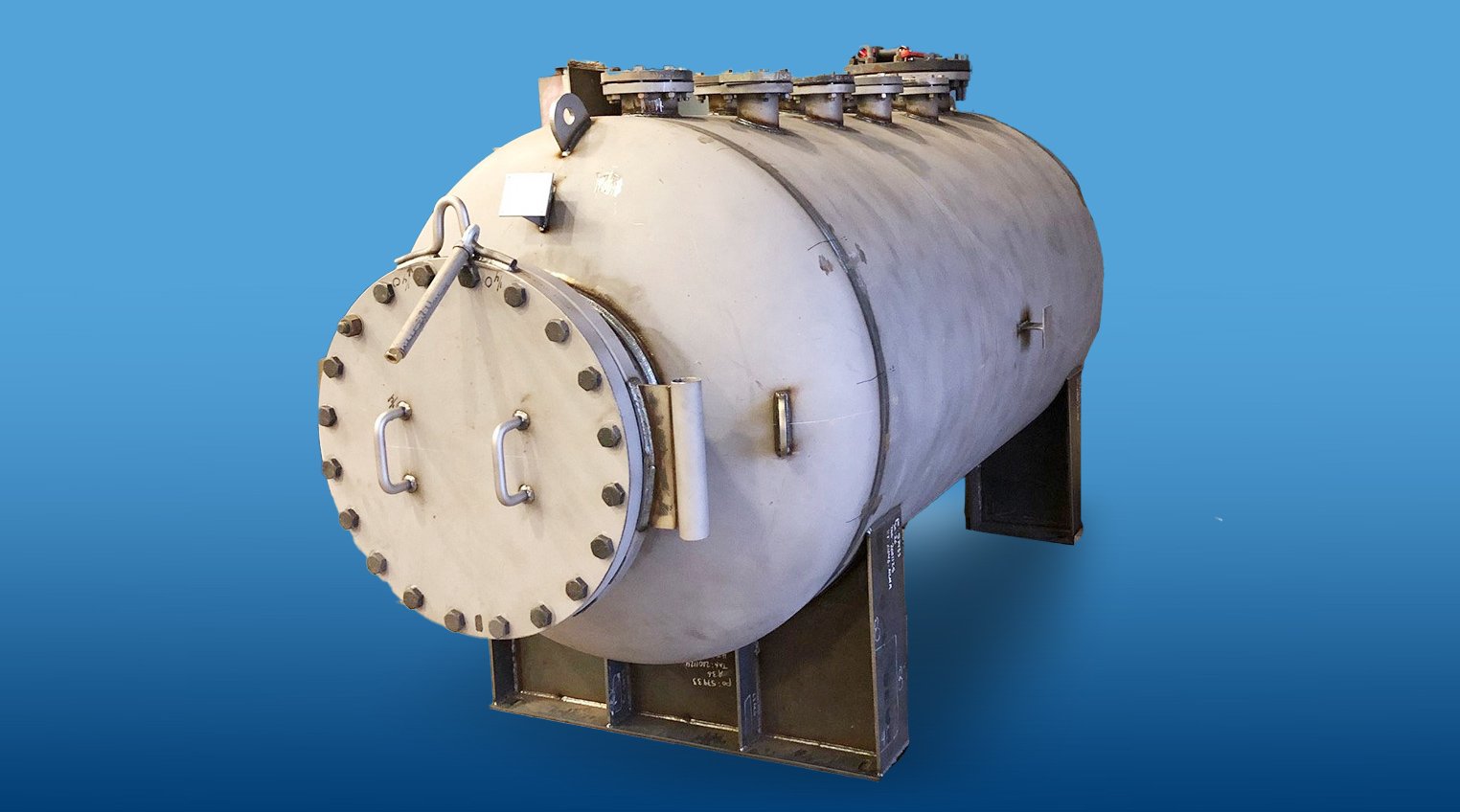The Role of ETFE Linings in Corrosion-Resistant Equipment
Imagine a rocket ship circling the earth in dozens of rotations or traveling multiple times to the moon and back. That would be the equivalent of 3.3 million miles (about 5,310,835.2 km), or the distance totaled by all the regulated pipelines in the U.S. carrying hazardous materials, according to the Pipeline and Hazardous Materials Safety Administration1, a division of the Department of Transportation.
These pipelines carry a variety of materials, including energy commodities. However, that pipeline mileage gives a glimpse into the scope of the challenge for protecting people, the environment, and capital equipment from the 1.6 billion tons of hazardous materials shipped annually.

The chemical processing industry accounts for a good portion of those hazardous materials, and the market is growing. Multiple sources project a compound annual growth rate of above 6% for the chemical industry looking to 2030. The pipes, columns, and vessels servicing this industry require protection to properly and completely enclose the contents.
The superior properties of ETFE linings for aggressive chemicals
Rubber, plastic, and enamel coatings provide decent resistance to chemical exposure; however, these materials and their application methods can fall short when exposed to aggressive chemicals or temperature extremes. This is where ethylene tetrafluoroethylene (ETFE) linings truly excel.

ETFE is a partially fluorinated polymer that offers exceptional chemical resistance rivaling PTFE, coupled with outstanding thermal stability ranging from low cryogenic temperatures to high temperatures up to 300° F (150° C). Strong oxidizing acids near their boiling points, such as nitric acid at high concentrations, would affect this material to varying degrees. Overall, its unique properties make this polymer the ideal choice when dealing with a wide range of acids, solvents, chlorides, and other corrosives that would quickly degrade alternative lining materials.
Another feature that makes ETFE a superior choice is its durability. Some customers have solids within the process stream that would erode other liners. ETFE offers corrosion resistance. Its nonporous, nonstick surface provides a definite advantage for customers who require complete fluid recovery or wish to avoid buildup inside a vessel, column, or pipe.
How well does ETFE work within the process of rotational lining?

During the rotational lining process, a pipe or vessel is inserted into an oven. The selected resin is introduced into the component and the part rotates around two perpendicular axes while being heated.
The inserted resin, in this case ETFE, melts and flows evenly across the inner surface area as the part is slowly rotated on the axis. The combination of heat and rotation allows the molten ETFE to distribute and level out. It takes skill and expertise with rotational lining to rotate the part in the right ratio between the X and Y axes to create a consistent liner thickness.
Finally, the part is cooled while still rotating, to allow the ETFE lining to solidify into a seamless, bonded construction directly onto the metal substrate. The final thickness of the ETFE typically ranges from 0.125 to 0.25 inches.
By forming and curing the lining in place during this rotational heating/cooling cycle, rotational lining provides a uniform and homogeneous coating within the interior surface for a durable, continuous protective layer. The monolithic layer is smooth, without joints, seams, or leak paths. These vulnerabilities could be found in a lining fabricated from pre-formed segments that require welding or other methods of joining.
ETFE as a polymer exhibits its properties to their best advantage via the rotational lining process because it adheres well to properly prepared metal surfaces. RMB Products sources a version of ETFE resin that is purposefully designed to melt, flow, and bond tenaciously to the metal substrate. As one project engineer stated, “All roads lead to ETFE when it comes to corrosion-resistant lining solutions.”
ETFE is unique among polymers used in rotational lining because, unlike PFA or PVDF, it does not require a primer to adhere to the metal. Since ETFE effectively becomes the new inner surface of the pipe, with superior bond strength, it can withstand full vacuum conditions without collapsing. Many customers are operating columns or process vessels under full vacuum. Sliplining methods can leave air gaps behind the lining material, which can blister or collapse under vacuum conditions.
Types of vessels or applications that benefit from ETFE linings
ETFE linings or the resin supplied by Chemours (which supplies a Tefzel™ ETFE brand) offer effective protection for a diverse range of equipment, including:
- Process piping for transferring hazardous chemical streams
- Reaction vessels, storage tanks, columns, and scrubbers/strippers
- Heat exchangers, condensers, reboilers, and evaporators
- Electrochemical cells, electrolyzers, and crystallizers
Customers from the broader chemical processing world rely on ETFE linings to protect capital equipment during manufacturing. This can include specialty chemical and plastic resin manufacturers, lithium processors, and PVC producers — any company with an industrial application that needs to handle highly corrosive acids, solvents, halogens, or other aggressive media.
The ETFE lining provides a completely inert barrier between the process stream and metal equipment housing. This exceptional chemical resistance, coupled with a thick erosion and abrasion-resistant lining, results in an outstanding service life and superior equipment protection.
Long-term performance that lasts for decades
While ETFE linings can last for decades, inspection and monitoring are still recommended, especially early on. RMB suggests that companies installing pipes or vessels newly lined with ETFE try to get internal access to the pipe or vessel after startup. This early inspection helps companies confirm everything is operating as expected. Thereafter, inspection intervals of three to five years are advisable, unless a crew member detects a hot spot that could start to degrade the lining prematurely.
More frequent inspections would benefit operations subject to more extreme circumstances, such as:
- Components that undergo stress due to extremely aggressive service
- Processes that stretch the temperature and chemistry limits for the liner
- Frequent or routine temperature cycling
Ultimately, the combination of superior corrosion resistance, excellent adhesion, and flow characteristics during the rotational lining process results in a seamless construction that makes ETFE an outstanding lining solution. It provides a longer service life and the best value per service year compared to other material options for corrosion-resistant equipment.
Whether handling harsh chemical streams, high temperatures, or erosive process conditions, ETFE linings fulfill application requirements for a long service life. This fluoropolymer’s versatile protective properties allow for longer equipment life and extended uptime —even in the most aggressive operational scenarios.
Field examples for applications that benefit from ETFE linings
 Case studies serve as compelling evidence of ETFE's remarkable performance in demanding industrial environments, highlighting its unmatched durability and longevity. Let's explore a few industry examples where ETFE linings have demonstrated their superiority.
Case studies serve as compelling evidence of ETFE's remarkable performance in demanding industrial environments, highlighting its unmatched durability and longevity. Let's explore a few industry examples where ETFE linings have demonstrated their superiority.
- Chemical processing plants: Chemical processing plants rely on robust equipment that can withstand the corrosive effects of harsh chemicals. In one case study, a chemical reactor vessel was lined with ETFE to protect it from corrosive acids used in the production process. The ETFE lining effectively prevented corrosion, ensuring prolonged equipment lifespan and minimal maintenance requirements. By mitigating corrosion, ETFE linings contribute to enhanced operational efficiency and reduced downtime, resulting in significant cost savings for chemical processing plants.
- Mining operations: Mining operations face numerous challenges, including abrasive materials that can accelerate equipment wear and deterioration.
 In an Eastern U.S. quartz processing facility, ETFE-lined leach vessels were subjected to abrasive metal particulates during the extraction process using a quartz tumbler. Despite the harsh conditions, the ETFE linings exhibited superior erosion resistance compared to the previous lining material PTFE, prolonging the lifespan of critical equipment components. By protecting against erosion, ETFE linings reduce maintenance costs and extend the operational life of equipment in mining operations.
In an Eastern U.S. quartz processing facility, ETFE-lined leach vessels were subjected to abrasive metal particulates during the extraction process using a quartz tumbler. Despite the harsh conditions, the ETFE linings exhibited superior erosion resistance compared to the previous lining material PTFE, prolonging the lifespan of critical equipment components. By protecting against erosion, ETFE linings reduce maintenance costs and extend the operational life of equipment in mining operations. - Water treatment facilities: Water treatment facilities encounter corrosive contaminants and fluctuating environmental conditions, necessitating corrosion-resistant equipment solutions. In a case study conducted at a water treatment plant, ETFE linings were used to protect storage tanks and filtration systems from corrosion caused by waterborne contaminants. The ETFE linings maintained their integrity even when exposed to corrosive substances, ensuring the reliability and longevity of the equipment. By preventing corrosion-related failures, ETFE linings contribute to the uninterrupted operation of water treatment facilities and regulatory compliance.
In each of these industry examples, ETFE linings have outperformed traditional materials, offering extended equipment lifespan and reduced maintenance costs. By leveraging the durability and resilience of ETFE, businesses across various sectors can enhance the reliability and longevity of their industrial equipment, driving operational excellence and sustainable growth. Contact RMB for more information about ETFE or other linings. Or request a quote to get started on your next corrosion-protection project.




